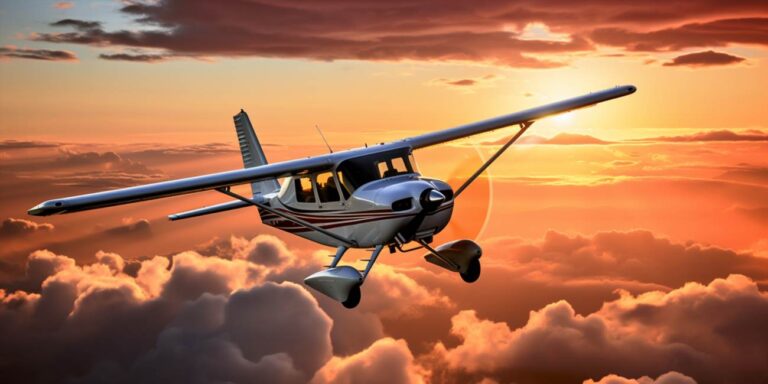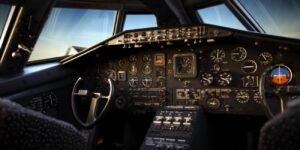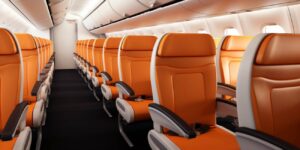Trainer aircraft are specially designed and equipped planes crafted to provide a safe and instructive space for fledgling aviators. These aircraft are typically dual-controlled, allowing both the student and instructor to manipulate the plane’s functions. This feature ensures a smooth transition from theoretical knowledge to practical application, fostering a comprehensive learning experience.
When selecting the best trainer aircraft, several factors come into play. Performance capabilities are paramount, as the aircraft should be capable of executing a range of maneuvers, simulating real-world scenarios. Additionally, technological advancements in avionics and instrumentation contribute to a more realistic training environment, preparing pilots for modern cockpit complexities.
One of the key considerations is the aircraft’s design. Some trainers are purpose-built, focusing solely on training aspects, while others are adapted from general aviation models. The former often proves more efficient in skill-building, with features tailored for optimal training effectiveness.
Durability is another essential factor. As student pilots familiarize themselves with handling the aircraft, the plane must withstand the rigors of repeated training sessions. Robust construction and materials contribute to the overall longevity of the trainer aircraft.
Cost considerations also weigh heavily in the decision-making process. Balancing the budgetary constraints with the need for advanced features can be challenging. Some trainers offer a compromise, providing adequate training capabilities without an exorbitant price tag.
Let’s explore a comparison table showcasing the key attributes of three popular trainer aircraft:
| Aircraft Model | Performance Capabilities | Technological Advancements | Design | Durability | Cost |
|---|---|---|---|---|---|
| Cessna 172 | Well-rounded, suitable for various maneuvers | Modern avionics suite for realistic training | Purpose-built for training | Durable airframe | Affordable |
| Piper PA-28 Archer | Stable flight characteristics | Advanced avionics options | Adapted from general aviation model | Robust construction | Moderate cost |
| Diamond DA40 | Excellent fuel efficiency | State-of-the-art glass cockpit | Purpose-built for training | Composite airframe for durability | Mid to high range |
This table provides a snapshot of the various factors to consider when evaluating trainer aircraft options. Whether prioritizing budget, cutting-edge technology, or specialized design, selecting the right trainer is a crucial step towards becoming a proficient and skilled pilot.
Cessna 152 – a popular option for initial training
The Cessna 152 has established itself as a popular choice for initial flight training, thanks to its reliable performance and user-friendly characteristics. This two-seat, fixed-wing aircraft is renowned for its durability and ease of handling, making it an ideal platform for aspiring pilots.
One of the key features that sets the Cessna 152 apart is its simple design, which facilitates ease of use for beginners. The aircraft’s fixed tricycle landing gear enhances ground stability, making takeoffs and landings more manageable during training sessions. This feature plays a crucial role in instilling confidence in novice pilots.
The 152’s cockpit layout is another aspect that contributes to its popularity in training scenarios. The instrument panel is designed for clarity and accessibility, with essential flight instruments clearly visible to the pilot. This straightforward configuration aids students in quickly grasping the fundamentals of flight navigation and control.
Powered by a Lycoming O-235 engine, the Cessna 152 offers a balance of power and fuel efficiency. This ensures that students can experience a range of flight conditions while keeping operational costs relatively low. The aircraft’s cruise speed is conducive to effective training, allowing students to practice various maneuvers without overwhelming complexity.
When it comes to safety features, the Cessna 152 prioritizes reliability. The high-wing configuration enhances stability, especially during slow flight and landing phases. This characteristic is crucial for students refining their skills in controlled descents and precision landings.
Additionally, the 152’s robust construction contributes to its safety profile. The durable airframe can withstand the rigors of training, providing instructors and students with confidence in the aircraft’s ability to handle various learning scenarios.
For flight schools and training academies, the cost-effectiveness of the Cessna 152 is a significant advantage. Its relatively lower operational expenses make it an attractive option for institutions aiming to provide quality training without breaking the bank. This affordability factor has contributed to the widespread use of the Cessna 152 in flight training programs globally.
Diamond da20 – modern cabin and avionics
The Diamond DA20 stands as a pinnacle in modern aviation, seamlessly blending a glass cockpit with unparalleled features. The aircraft’s modern cabin and avionics redefine the flying experience, elevating it to new heights of sophistication and ease.
Step into the DA20’s cockpit, and you’ll find yourself immersed in a technologically advanced environment. The glass cockpit not only enhances visibility but also integrates a plethora of cutting-edge avionic systems. Navigating the skies becomes an intuitive and efficient process, thanks to the seamless integration of digital displays and controls.
The aircraft’s commitment to being fuel-efficient is evident in every flight. The DA20’s design incorporates aerodynamic efficiency and lightweight materials, reducing drag and optimizing fuel consumption. This not only translates to economic advantages for operators but also underscores Diamond’s dedication to environmental sustainability.
Comfort is paramount in the Diamond DA20. The modern cabin is designed with both the pilot and passengers in mind. Plush seating, ergonomic controls, and noise reduction technologies create an atmosphere of tranquility within the cabin. Whether embarking on a short journey or a cross-country adventure, the DA20 ensures that every moment spent in the air is nothing short of luxurious.
One of the standout features of the DA20 is its glass cockpit, which goes beyond conventional instrumentation. The digital displays provide real-time data, enhancing situational awareness and reducing pilot workload. This technologically advanced cockpit not only improves safety but also opens up new possibilities for pilots, enabling them to explore the full potential of their flying skills.
As a testament to its commitment to innovation, Diamond has created an aircraft that is not only comfortable and technologically advanced but also environmentally conscious. The fuel-efficient design ensures that the DA20 is a responsible choice for those who seek a blend of performance and sustainability in their aviation pursuits.
Piper pa-28 – versatile and roomy 4-seater
The Piper PA-28 stands as a testament to aviation versatility, offering a four-seater experience that seamlessly combines spacious interiors with good visibility for an unparalleled flying adventure. Designed with the modern aviator in mind, this aircraft excels not only in performance but also in creating an atmosphere conducive to social flying.
Step into the Piper PA-28, and you’re welcomed by a cabin that goes beyond mere functionality. The term spacious takes on a new dimension as the interior layout maximizes every inch, providing comfort for both pilot and passengers alike. Whether you’re embarking on a cross-country journey or a local joyride, the PA-28 ensures that you never feel cramped, enhancing the overall flying experience.
What sets the Piper PA-28 apart is its commitment to good visibility. The panoramic windows offer a breathtaking, unobstructed view of the surroundings. Pilots can revel in the beauty of the skies, and passengers can indulge in the awe-inspiring landscapes below. With visibility that transcends the ordinary, every flight becomes a visual feast.
But it’s not just about the view; the Piper PA-28 is crafted to haul passengers with ease. The four-seater configuration is not only about numbers but a dedication to making each journey a shared experience. Whether you’re flying with family or friends, the PA-28 fosters an environment where the excitement of aviation can be enjoyed collectively, turning every trip into a social event.
Imagine soaring through the clouds, the hum of the engine harmonizing with the laughter and chatter inside the cabin. This is the essence of social flying in the Piper PA-28. It’s not just a mode of transportation; it’s a platform for creating memories and sharing moments that transcend the ordinary. The PA-28 transforms the act of flying into a communal adventure.
So, whether you’re a seasoned pilot looking for a reliable and spacious aircraft or a group of friends yearning for a taste of social flying, the Piper PA-28 beckons. With its commitment to good visibility and the ability to effortlessly haul passengers, it’s more than an aircraft; it’s a gateway to a world where the joy of flying is magnified by the camaraderie it fosters.






